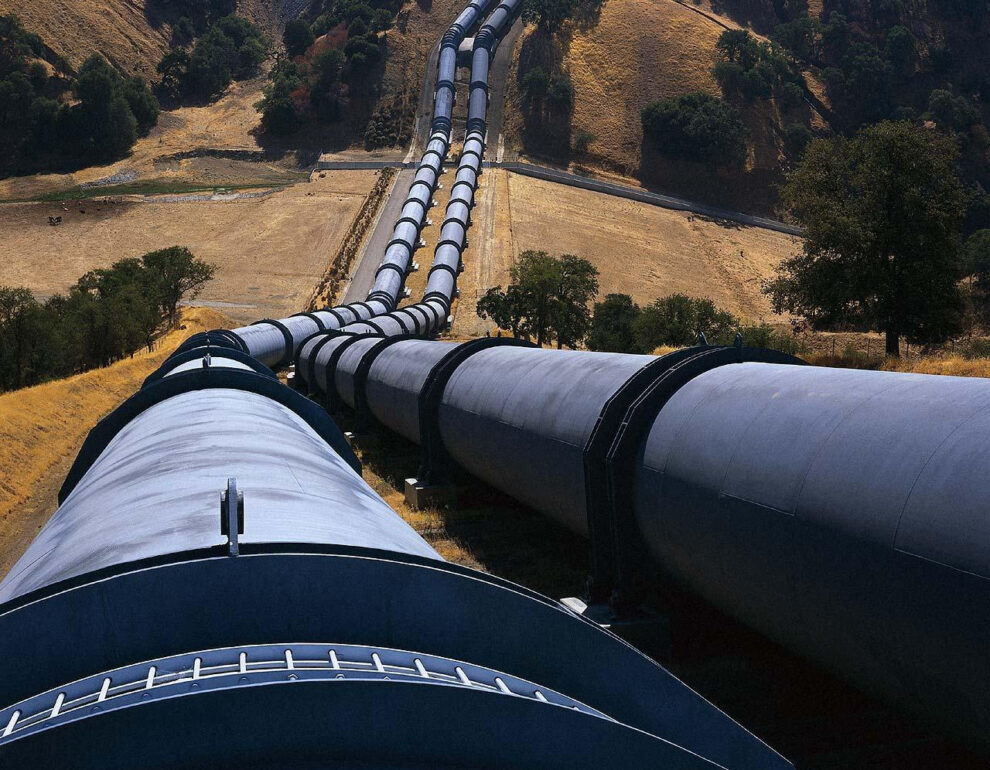Kazakhstan is increasing the export of crude oil through non-Russian routes, as part of its diversification strategy.
The country’s major oil transporter KazTransOil revealed that the flow of Kazakh oil to European markets through Azerbaijan increased in April-June.
Citing a source from the energy company, Trend reported on Thursday that the flow of Kazakh oil from the Tengiz field through the Baku-Tbilisi-Ceyhan oil pipeline reached 347,100 tonnes in the second quarter of this year.
In Q1 2023, the company exported only 19,200 tonnes of Tengiz oil via this route — approximately 18 times less than Q2.
KazTransOil also experienced a notable surge in the volume of oil transported through its main pipeline network during Q1 2023. The remarkable growth was achieved as the total volume reached 10.3 million tonnes, marking a 591,000-ton increase compared to the same period of the previous year.
The transportation of Kazakh oil for export to European markets through Azerbaijan increased on the back of a master agreement signed earlier between Azerbaijan’s SOCAR and Kazakh national energy company KazMunayGas.
The document provides for transporting 1.5 million tons of oil annually from the Tengiz field, through the Baku-Tbilisi-Ceyhan pipeline.
In 2022, Kazakh President Kassym-Jomart Tokayev emphasized the significance of fully leveraging the potential of the Trans-Caspian International Transport Route (TITR), also known as the Middle Corridor, which stretches from China to Europe covering Central Asia and South Caucasus.
The Trans-Caspian route matters to Kazakhstan’s economic security and has grown more important, as exports through Russian territory are becoming increasingly difficult due to the fallout from Moscow’s Ukraine war.
The Middle Corridor has emerged as a key trade route between Europe and Asia, offering greater economic benefits and faster transit times for the landlocked countries in the region. The Baku International Sea Trade Port in Azerbaijan, Aktau/Kuryk ports in Kazakhstan, and Turkmenbashi Port in Turkmenistan are the primary maritime points on this route, which promises significant gains for regional trade.
Compared to the Northern Corridor, the Middle Corridor provides a more cost-effective and faster trade route, cutting down the travel distance by 2,000 kilometers. Additionally, the Middle Corridor passes through more favorable climate conditions and reduces travel time by 15 days compared to sea routes. The Middle Corridor also presents immense opportunities for cargo traffic in Asia, enabling goods to reach the Middle East, North Africa, and the Mediterranean region by integrating port connections in Türkiye.
The strategic location of the Middle Corridor is expected to create significant economic opportunities, enabling South Caucasian and Central Asian countries to benefit from the $600 billion China-Europe trade annually. The development and deepening of Trans-Caspian cooperation will be facilitated by the establishment of logistics centers and free trade zones at the ports of Azerbaijan, Kazakhstan, and Turkmenistan, providing a boost to regional economies. By leveraging the benefits of the Middle Corridor effectively, the countries in the region can reap the rewards of increased trade and economic growth.
Source : Caspian News































